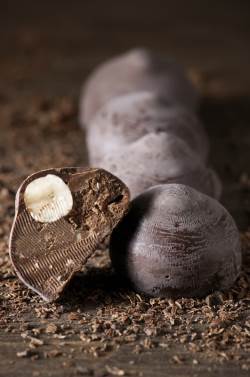 Quality is important when buying gourmet chocolates online, and the preparation methods must be consistent and precise in order to prevent chocolate bloom and produce a delectable treat that withstands shipping from the factory to the final destination.
Quality is important when buying gourmet chocolates online, and the preparation methods must be consistent and precise in order to prevent chocolate bloom and produce a delectable treat that withstands shipping from the factory to the final destination.
Is it good when chocolate blooms?
For the true chocolatier, the short answer is NO! While a blooming piece of chocolate is perfectly safe to eat, it doesn’t look as nice and its texture may not be perfect.
So what exactly is a blooming chocolate?
Chocolate has “bloomed” when the surface of the chocolate develops a white film and loses it shine. There are a couple of theories for exactly what is causing the blooming, and here is one of them:
Chocolate has triglycerides (the fat properties one finds in things like vegetable oils, animal fats, etc.) that we call cocoa butter. A “fat bloom” occurs when the cocoa butter in the chocolate separates from the rest of the chocolate and rises to the surface, creating a greasy or streaky appearance.
Why does fat bloom occur?
The process of making a chocolate bar is actually complicated. Chocolate must be tempered, which is a process of repeatedly raising and lowering the chocolate’s temperature to exact measurements before it is ready to be made into candy. The tempering creates uniform, stable crystals of cocoa butter. When everything is done correctly, the end result is that all the differently sized cocoa butter crystals will be stable and not break down into “a fat bloom”. Done incorrectly…and well the product doesn’t look as nice.
Fat bloom can occur in other ways besides the tempering process, such as if the chocolate maker doesn’t allow the candy to cool before packaging it. Or, in the case of less expensive chocolate, if a cocoa butter substitute is used, it may not follow the same recipe for tempering and thus create fat bloom.
Or a third way fat bloom may be created is if the chocolate is used to cover a cold filling or nuts that contain fat. This again can cause the chocolate cocoa crystals to become unstable and create fat bloom.
Fat bloom caused by pairing the chocolate with nuts may be slowed down if chocolate makers add a tiny amount of an “antibloom fat” such as palm oil. Palm oil is also used as an emulsifier in other foods, too.
Chocolatiers work very hard to create chocolate candy that will not bloom! Who knew?
